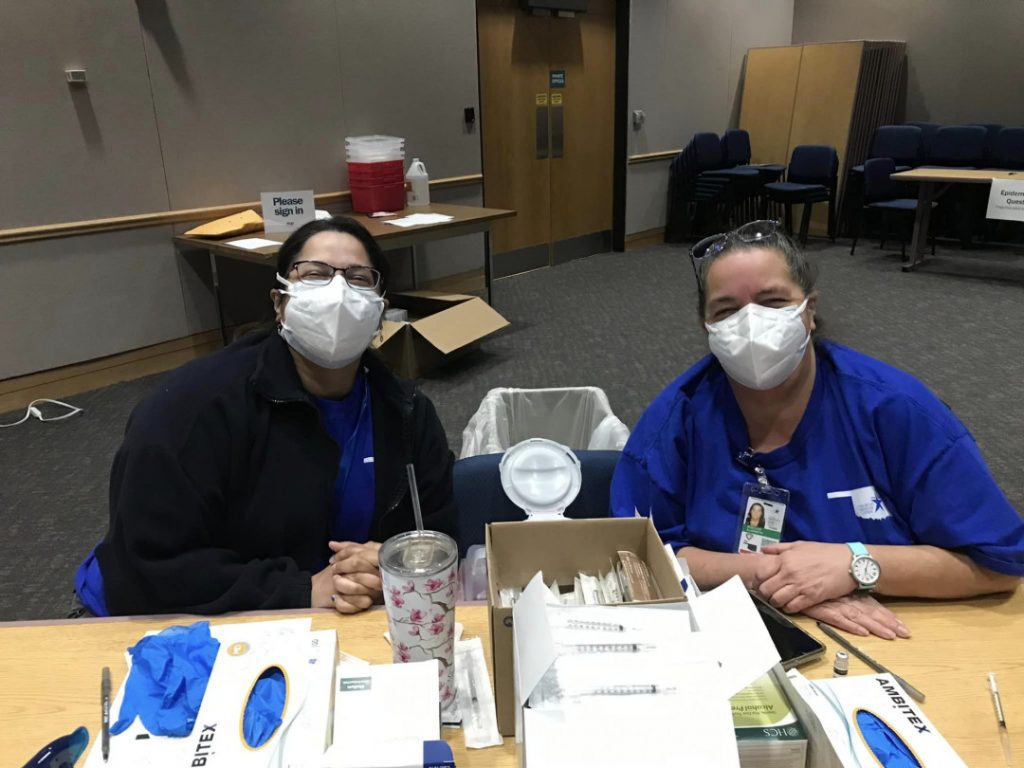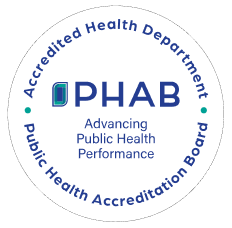When a pest is capable of impacting human health, controlling that pest becomes a community concern. Our Vector Control program monitors pests such as mosquitoes that can transmit or “vector” diseases.
THD operates a mosquito surveillance program in order to confirm when West Nile virus is present in the community. Special mosquito traps are set in various locations throughout Tulsa County. Samples are collected and tested weekly for the presence of WNV. The Tulsa Health Department also works to control mosquito populations during the spring and summer. In a typical mosquito season, THD sprays hundreds of square miles for adult mosquitoes. The objective of the surveillance is to detect the presence of mosquitoes, determine abundance, species, make a risk assessment, and provide a basis for control. Control methods include larviciding and adulticiding when necessary.
View our latest data in our mosquito surveillance program, including weekly collection and WNV testing results.
You can help reduce the mosquito population by following a few simple steps:
West Nile Virus is a type of encephalitis (flu-like) virus that can be transmitted by being bitten by an infected mosquito. THD monitors incidences of the West Nile Virus Surveillance by testing mosquitoes in our laboratory. WNV tests are conducted weekly. The Tulsa Health Department works closely with the Oklahoma State Department of Health and Oklahoma State University to monitor mosquito populations and all mosquito borne diseases. These collaborations ensure that the citizens of Tulsa County will receive the best mosquito protection available.
To help reduce your chance of being bitten by a mosquito carrying West Nile Virus, take the following precautions:
Ticks are abundant in Oklahoma and commonly feed on humans and other animals. Ticks live in wooded, grassy, brushy areas and may live on animals. Outdoor activities such as camping, hunting, gardening, or hiking brings ticks and people in close contact.
Although only a small percentage of these ticks are infected with disease-causing bacteria, numerous tickborne illnesses including, Rocky Mountain Spotted Fever, Ehrlichiosis, and Tularemia, are reported each year. Rocky Mountain Spotted Fever and Ehrlichiosis are most common tickborne diseases reported in Oklahoma. Rocky Mountain Spotted Fever is mostly associated with the American Dog Tick and Ehrlichiosis is most commonly associated with the Lone Star Tick.
The Tulsa Health Department’s Environmental Health Services and Epidemiology programs provide disease education and tick bite prevention and referrals for testing.
Check clothing for ticks. Ticks latch on to clothing and are sometimes difficult to detect. Remove any ticks found and tumble dry clothes on high heat for 10 minutes to kill ticks on clothing. Wet clothes may require a longer period. Use hot water if for any clothes requiring washing first. Lower temperatures will not kill ticks. Bath or shower after being outdoors. Shower within two hours to reduced risk of tickborne diseases. Showering may wash off unattached ticks. Examine pets and people and complete a full body check after exposure to areas that harbor ticks.
Check the following parts of the body:
Bed bugs are small insects that feed on human blood. They are usually active at night when people are sleeping. Adult bed bugs are about the size of an apple seed and they are big enough to easily be seen. They hide in cracks in furniture, floors, mattresses, walls or electronics. They can live for several months without feeding.
Most bed bug bites are initially painless, but later turn into large, itchy skin bumps. These bumps do not have a red spot in the center as do the bites from fleas. The bumps itch and usually go away after a few hours. Some people do not have a reaction to the bites of bed bugs.
While bed bugs are NOT known to spread diseases, their bites often cause itchy skin welts and can lead to secondary infections of the skin and lymph glands when scratching and irritation allows introduction of bacteria from the skin surface. Bed bug bites may induce an alllergic reaction or digestive upset.
In most cases, people carry bed bugs into their homes unknowingly. Usually bed bugs arrive in infested furniture, bedding, clothing, or luggage.
How Do I Know if My Home Is Infested?
You may notice itchy skin bumps when you wake up. You may also see the bed bugs themselves or the bloodstains from crushed insects. Dark spots often appear on bedding from their droppings.
Rats and mice not only destroy property and contaminate food and animal feed, they cause unsanitary conditions and can spread diseases. To help avoid a rodent infestation, remember to store grain, seed, pet food, and other potential food sources in a rodent-proof container. Eliminate outdoor water sources such as leaking pipes. Also, keep your property free from lumber, rocks, debris, weeds, or other materials that may give rodents harborage.
If you suspect a rodent problem, the THD Rodent Abatement Program can help. We’ll conduct a property survey to look for signs of rats, including possible food sources and harborage. Adjoining properties are included in our surveys. Should rats be found during the survey, THD can bait exterior residential premises. This will only be done with the permission of the property owner or occupant.
Please call 918-595-4200 to request an exterior rodent survey or for more information.
Related Resources
The cockroach is an insect that is considered an allergen source and an asthma trigger for residents. Although little evidence exists to link the cockroach to specific disease outbreaks, it has been demonstrated to carry Salmonella typhimurium, Entamoeba histolytica, and the poliomyelitis virus. They do not bite, but they do have heavy leg spines that may scratch. The three most common types of roaches in Oklahoma are German, American and Oriental cockroaches.
As housing inspectors, THD assists tenants and landlords to educate on preventing harborage conditions as well as review the importance of pest control. Property managers/owners are to provide pest control to prevent and treat pest control infestations.
Cockroaches are insects. Cockroaches have six legs, wings, and antenna. They can run up to three miles an hour, and have been around since the dinosaurs. They range in size and color, and their shed skin contains allergens that can cause asthma. Cockroaches are primarily nocturnal. Daytime sightings may indicate potentially heavy infestations. They tend to hide in cracks and crevices and can move freely from room to room or adjoining housing units via wall spaces, plumbing, and other utility installations. Entry into homes is often accomplished through food and beverage boxes, grocery sacks, animal food, and household goods carried into the home. The three most common types of roaches in Oklahoma are German, American and Oriental cockroaches.
Four management strategies exist for controlling cockroaches:
Prevention
This strategy includes inspecting items being carried into the home and sealing cracks and crevices in kitchens, bathrooms, exterior doors, and windows. Structural modifications would include weather stripping and pipe collars.
Sanitation
This denies cockroaches food, water, and shelter. These efforts include quickly cleaning food particles from shelving and floors; timely washing of dinnerware; and routine cleaning under refrigerators, stoves, furniture, and similar areas. If pets are fed indoors, pet food should be stored in tight containers and not left in bowls overnight. Litter boxes should be cleaned routinely. Access should be denied to water sources by fixing leaking plumbing, drains, sink traps, and aquaria. Elimination of shelter can be partially accomplished by purging clutter, such as papers and soiled clothing and rags.
Trapping
Commercially available cockroach traps can be used to capture roaches and serve as a monitoring device. The most effective trap placement is against vertical surfaces, primarily corners, and under sinks, in cabinets, basements, and floor drains.
Chemical Control
The use of chemicals typically indicates that the other three strategies have been applied incorrectly. Numerous insecticides are available and appropriate information is obtainable from EPA or services are available from local pest control companies.
The cockroach is considered an allergen source and an asthma trigger for residents. Although little evidence exists to link the cockroach to specific disease outbreaks, it has been demonstrated to carry Salmonella typhimurium, Entamoeba histolytica and the poliomyelitis virus. The sight of cockroaches can cause considerable psychologic or emotional distress in some individuals. They do not bite, but they do have heavy leg spines that may scratch.
THD values your feedback and concerns. If you’ve observed potentially unsafe food practices or unhealthy conditions, follow the link below to fill out our complaint form.
We have 10 locations across Tulsa County that offer a variety of services to help you and your family stay healthy.







